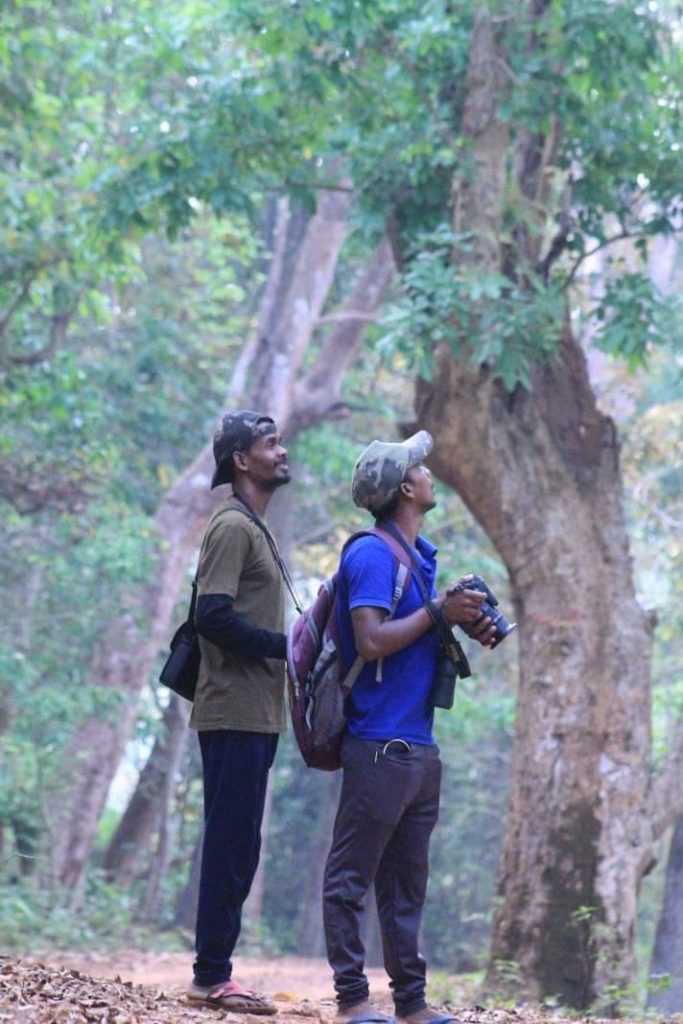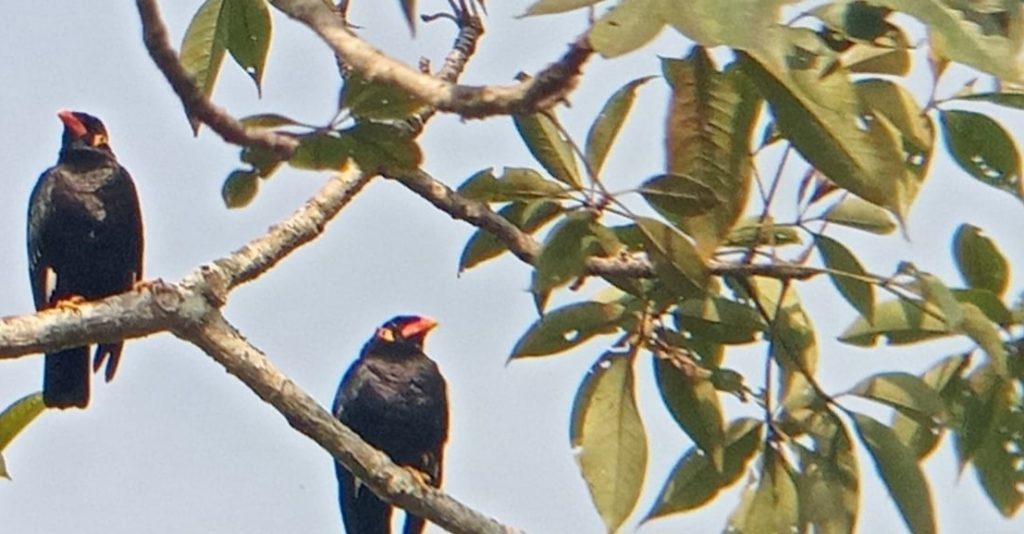
Mynah mitras have been employed inside the Kanger Valley National Park in Bastar as part of the bird’s conservation and protection programme. A report by Deepanwita Gita Niyogi
Samluram Nag could not complete his bachelor’s degree in science, but this tribal youth has found a new vocation, that of protecting the Bastar hill mynah. The bird is endemic to the Kanger Valley National Park of Chhattisgarh.
Today, Nag is a mynah mitra or a friend of the mynah. A resident of Kutumsar village inside the national park area, he has been employed by the forest department for the past two years. For his work, which involves daily patrolling inside the vast forest to locate the birds, he receives about Rs 9,960 per month.
The Bastar hill mynah, black in colour, is under threat due to deforestation and development. But efforts are on to stabilise its population and safeguard its habitat.
“The mynah protection work started even before I joined as a mynah mitra. Now, it has intensified through the presence of several mynah mitras who work hard like me,” Nag said.
Every morning, Nag is excited to get up early and begin his duty with a binocular in hand. In the months of September and October, some 200 birds were spotted in Kanger Valley. The birds prefer to live inside holes made by woodpeckers in Sal trees.
On the lookout for mynah
Nag patrols five km daily till late afternoon in a specific area. He pointed out that even a few years ago, it was difficult to spot the Bastar hill mynah inside the national park. At present, he and his companions, however, see them often perched on trees.

“I try to find the birds along the five km stretch which has been assigned to me. When I left college, I did not know how to secure my future and that of my family having ten members. Now, all the mynah mitras are happy to get a good source of income monthly.”
Apart from Nag, his friend Laikhan is also a mynah mitra. He explained that the mynah mitras did not undergo training. A few of them used to roam about the forest and had knowledge about the birds.
“The birds got killed due to snares set for them by poachers as well as poison. As people used to kill birds for meat, some bird species are not seen anymore. It is fortunate that the Bastar hill mynah has survived,” Laikhan said.
To protect the Bastar hill mynah, seen mostly at dawn and at dusk, eco-development committees were formed three years ago at the village level. This has been of great help. Comprising 10 members, the eco development committees exhort people for controlled lopping for firewood. There are now over 25 such committees in the villages in and around the Kanger Valley National Park area.
Laikhan pointed out that people used to lop branches indiscriminately and did not take permission. But as there is heightened surveillance in the forest now, people pick up dry and fallen branches for use. If anyone is caught cutting a tree, the person is reprimanded and even punished. The committee members meet weekly to discuss matters.
As patrolling daily inside the forest is an arduous task, sometimes the mynah mitras rest and sleep at forest department patrolling camps.
“Sometimes we sleep in the patrolling camps at night. If we somehow miss the alarm, the sound made by the birds wake us up. There are so many now!,” chirped Laikhan.
Conservation awareness
Apart from the deployment of mynah mitras, school children are targeted through awareness drives every Saturday. So far, about 50 workshops have been organised in the nearby villages where children are taught about nature and the need to protect wildlife.
As part of the Bastar hill mynah conservation and protection project, Yugal Kumar was selected in August this year. His work is basically data collection, handling and analysis. Kumar also works with the mynah mitras, accompanies each mitra to the field and monitors their work. A weekly meeting takes place every Friday.
According to Kanger Valley National Park director Dhammshil Ganvir, the mynah conservation project will continue for a couple of years more. “Now, the movement of the birds has to be monitored using telemetry. In this regard, the Centre has given permission.”












